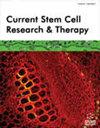Human Amniotic Epithelial Stem Cells Activate Autophagy via the IL-6/STAT3/FOXO3a Pathway to Facilitate Liver Regeneration Following Hepatectomy
IF 2.1
4区 医学
Q4 CELL & TISSUE ENGINEERING
引用次数: 0
Abstract
Background and Aim: Post-Hepatectomy Liver Failure (PHLF) leads to a poor prognosis in patients receiving hepatectomy treatment, and cell therapy can promote liver regeneration. In this study, we investigated the therapeutic potential of human Amniotic Epithelial Cells (hAECs) in promoting liver regeneration after partial hepatectomy (PHx) and the underlying molecular mechanism. Methods: We established a 70% PHx liver regeneration model, after which 5×105 hAECs were injected into the tail vein of mice. The resulting liver function, weight, and immunohistochemistry data were analyzed to determine whether hAECs can promote liver regeneration. Then, we explored the possible mechanism by which hAECs promote liver regeneration after PHx through RNA sequencing. Finally, western blotting and immunofluorescence were used to confirm the discovered potential mechanism and signaling pathway involved. Results: The mice in the hAECs group displayed enhanced liver regeneration 48 hours after 70% PHx and the expression levels of cell proliferation-related proteins were significantly higher than those in the control group. RNA sequencing analysis revealed that the key signaling pathway through which hAECs promote liver regeneration is the FOXO3a pathway. Mechanistically, IL-6 activates FOXO3a through STAT3, thereby promoting liver autophagy to enhance liver regeneration after PHx. Finally, western blotting and immunofluorescence confirmed that the IL-6/STAT3/ FOXO3a pathway promotes liver regeneration by activating autophagy. Conclusion: These results suggest that hAEC treatment promoted liver regeneration after PHx through the IL-6/ STAT3/FOXO3a/autophagy pathway.人羊膜上皮干细胞通过 IL-6/STAT3/FOXO3a 通路激活自噬,促进肝切除术后的肝再生
背景与目的:肝切除术后肝衰竭(PHLF)导致接受肝切除术治疗的患者预后不良,而细胞疗法可促进肝脏再生。本研究探讨了人羊膜上皮细胞(hAECs)在促进肝部分切除术(PHx)后肝再生方面的治疗潜力及其分子机制。方法:我们建立了一个 70% PHx 肝再生模型,然后将 5×105 hAECs 注入小鼠尾静脉。通过分析肝脏功能、重量和免疫组化数据,确定 hAECs 是否能促进肝脏再生。然后,我们通过 RNA 测序探讨了 hAECs 促进 PHx 后肝脏再生的可能机制。最后,我们利用免疫印迹和免疫荧光技术证实了所发现的潜在机制和信号通路。结果hAECs 组小鼠在 70% PHx 48 小时后肝脏再生能力增强,细胞增殖相关蛋白的表达水平明显高于对照组。RNA测序分析表明,hAECs促进肝脏再生的关键信号通路是FOXO3a通路。从机制上讲,IL-6通过STAT3激活FOXO3a,从而促进肝脏自噬,增强PHx后的肝脏再生能力。最后,Western 印迹和免疫荧光证实,IL-6/STAT3/ FOXO3a 通路通过激活自噬促进肝脏再生。结论这些结果表明,hAEC 处理可通过 IL-6/ STAT3/FOXO3a/ 自噬途径促进 PHx 后的肝脏再生。
本文章由计算机程序翻译,如有差异,请以英文原文为准。
求助全文
约1分钟内获得全文
求助全文
来源期刊

Current stem cell research & therapy
CELL & TISSUE ENGINEERING-CELL BIOLOGY
CiteScore
4.20
自引率
3.70%
发文量
197
审稿时长
>12 weeks
期刊介绍:
Current Stem Cell Research & Therapy publishes high quality frontier reviews, drug clinical trial studies and guest edited issues on all aspects of basic research on stem cells and their uses in clinical therapy. The journal is essential reading for all researchers and clinicians involved in stem cells research.
 求助内容:
求助内容: 应助结果提醒方式:
应助结果提醒方式:


